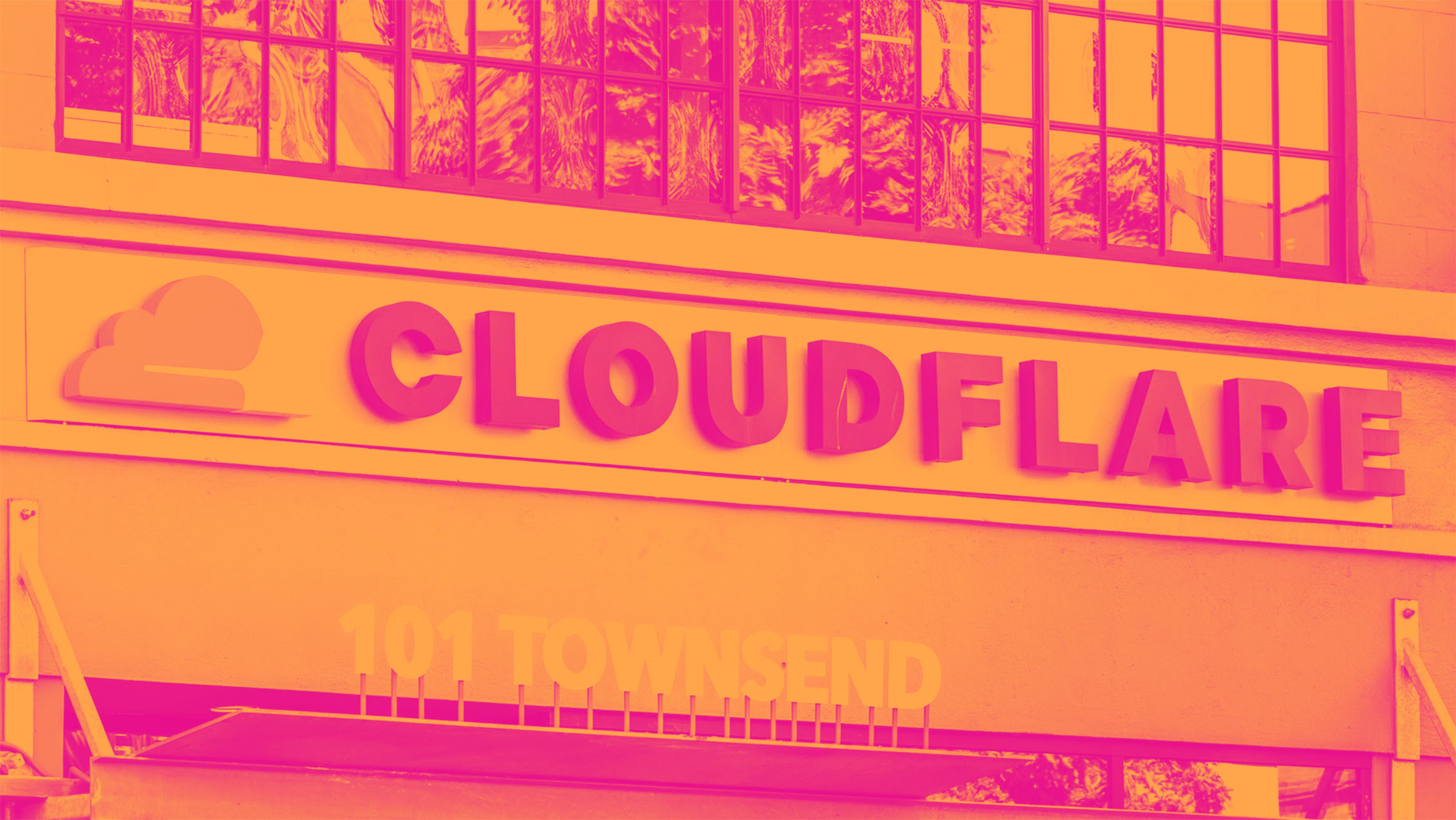
Cloudflare’s second quarter results were shaped by accelerating enterprise demand and notable expansion within its largest customer segments, yet the market responded negatively, likely reflecting persistent operating margin concerns. Management highlighted the success of its “pool of funds” deals and a 22% year-over-year increase in customers spending more than $100,000 annually, which now contribute over 70% of revenue. CEO Matthew Prince emphasized that “record ACV bookings” and improved sales productivity underpinned the company’s revenue growth, while also pointing to architectural advantages in handling large-scale security events. However, the continued decline in GAAP operating margin appeared to weigh on investor sentiment.
Is now the time to buy NET? Find out in our full research report (it’s free).
Cloudflare (NET) Q2 CY2025 Highlights:
- Revenue: $512.3 million vs analyst estimates of $501 million (27.8% year-on-year growth, 2.3% beat)
- Adjusted EPS: $0.21 vs analyst estimates of $0.18 (15.5% beat)
- Adjusted Operating Income: $72.32 million vs analyst estimates of $63.38 million (14.1% margin, 14.1% beat)
- The company lifted its revenue guidance for the full year to $2.11 billion at the midpoint from $2.09 billion, a 1.1% increase
- Management raised its full-year Adjusted EPS guidance to $0.86 at the midpoint, a 7.5% increase
- Operating Margin: -13.1%, down from -8.7% in the same quarter last year
- Billings: $559.2 million at quarter end, up 32.6% year on year
- Market Capitalization: $70.51 billion
While we enjoy listening to the management's commentary, our favorite part of earnings calls are the analyst questions. Those are unscripted and can often highlight topics that management teams would rather avoid or topics where the answer is complicated. Here is what has caught our attention.
Our Top 5 Analyst Questions From Cloudflare’s Q2 Earnings Call
- Keith Weiss (Morgan Stanley) pressed for details on the “agentic web” business model and monetization. CEO Matthew Prince explained that while the precise revenue model is not finalized, Cloudflare aims to enable transaction rails for AI agents and expects to benefit as adoption grows.
- Andrew James Nowinski (Wells Fargo) asked about the competitive advantage of Cloudflare’s Act 1 product architecture in handling DDoS attacks. Prince highlighted the unified network design, which eliminates the need for dedicated scrubbing centers, allowing scalable protection with minimal latency and cost impact.
- Matt Hedberg (RBC Capital Markets) inquired about the impact of go-to-market improvements on large deal wins and partner momentum. Prince credited the shift to a partner-first strategy for accelerating sales cycles and enabling larger, multi-year contracts.
- Gabriela Borges (Goldman Sachs) focused on the adoption friction and decision-makers for Act 4 content monetization products. Prince noted strong buy-in from both publishers and AI companies, emphasizing the need for a level playing field in content access and payment.
- James Edward Fish (Piper Sandler) questioned the migration of workloads from hyperscalers to Cloudflare Workers. Prince described a “land and expand” approach, where customers initially move select functions before transitioning more workloads as they realize cost and performance benefits.
Catalysts in Upcoming Quarters
Moving forward, our analysts will closely monitor (1) the pace of adoption and monetization for Cloudflare’s Workers AI and Act 4 content payment initiatives, (2) execution on large, consumption-based enterprise contracts and associated retention metrics, and (3) the company’s ability to balance sales capacity investments with margin discipline. Developments in AI-driven web interfaces and regulatory changes impacting data and content usage will also be critical signposts.
Cloudflare currently trades at $202.31, down from $207.57 just before the earnings. Is there an opportunity in the stock?See for yourself in our full research report (it’s free).
The Best Stocks for High-Quality Investors
Donald Trump’s April 2025 "Liberation Day" tariffs sent markets into a tailspin, but stocks have since rebounded strongly, proving that knee-jerk reactions often create the best buying opportunities.
The smart money is already positioning for the next leg up. Don’t miss out on the recovery - check out our Top 9 Market-Beating Stocks. This is a curated list of our High Quality stocks that have generated a market-beating return of 183% over the last five years (as of March 31st 2025).
Stocks that made our list in 2020 include now familiar names such as Nvidia (+1,545% between March 2020 and March 2025) as well as under-the-radar businesses like the once-micro-cap company Kadant (+351% five-year return). Find your next big winner with StockStory today.
StockStory is growing and hiring equity analyst and marketing roles. Are you a 0 to 1 builder passionate about the markets and AI? See the open roles here.





